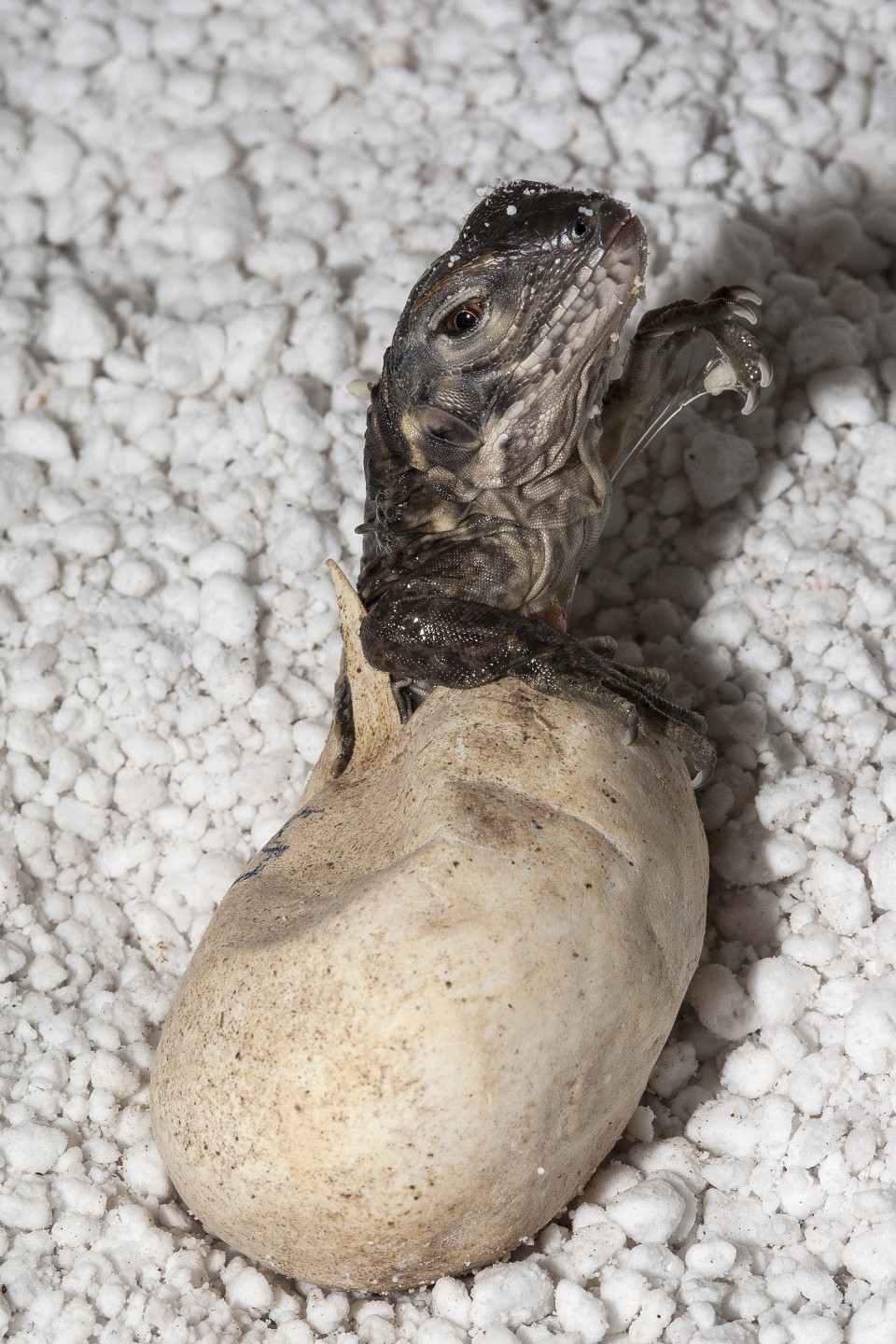Rock On: A Jamaican Iguana Hatches
When the three-and-a-half-inch hatchling with the five-inch tail emerged on August 29, 2013, he had no idea what a big deal he was. He was the first Jamaican iguana bred at the Anne and Kenneth Griffin Reptile Conservation Center, and his hatching made San Diego Zoo Global the first facility in the world to successfully reproduce the three most endangered lizards: the Grand Cayman blue iguana, the Anegada iguana, and the Jamaican iguana. The work researchers had done on behalf of these three rock iguana species since 1993 helped to save the reptiles from the brink of extinction.
Because all three rock iguana species are native to island habitats, they are especially vulnerable to loss of habitat, hunting, and the introduction of nonnative predators that eat eggs and young lizards. The Jamaican iguana was actually thought to be extinct since the 1940s, until someone’s dog found one in 1990. There turned out to be a small population of less than 100 in a remote area, and a conservation plan was implemented to protect the area and increase the population. The San Diego Zoo Institute for Conservation Research joined in the effort in 1993. It took 20 years of collaboration with other researchers and zoos, but finally one fertile egg was produced and very carefully incubated—and no scaly little lizard face had ever been more welcome when it hatched.
